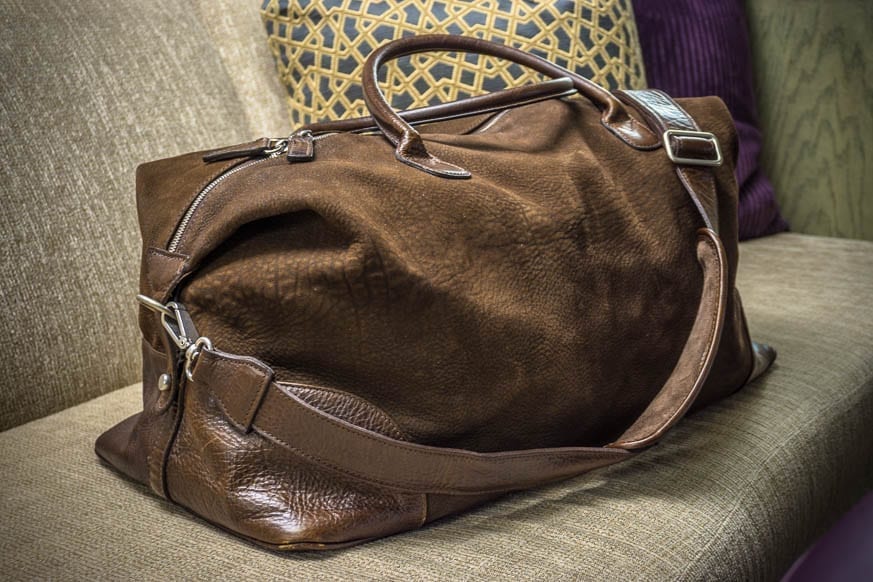Ever gone to a shop to buy a pair of shoes and wondered about the difference between nubuck and suede? Don’t worry, soon you’ll know where nubuck comes from, what it’s used for and how to care for it.
What is Nubuck Leather?
Nubuck has a feel similar to suede but it’s more durable since it comes from the top grain of the hide. It has a great look and feel and is used for a wide variety of products. It brings together some of the finer qualities among the various kinds of leather.

How Nubuck Leather is Made
To make nubuck leather, the outer (top-grain) layer of calfskin or cowhide is used. The top-grain layer is tougher and more resilient than the inner layer, which is used to make suede. However, because it may have visible markings and defects, the top grain is sanded and buffed on the outside to provide a consistent appearance. The sanding process leaves a slight nap of short protein fibers, giving a velvet-like finish to the leather. In order to hide any defects remaining in the nubuck surface, it is stained or dyed.
Quality
Because nubuck is made from top-grain leather, it is more durable and tough compared to suede. It is also more durable than bicast leather or bonded leather, which do not use the top-grain portion of the hide. However, it is more vulnerable to soiling and staining than other leathers due to its rough surface.
Appearance
After the brushing or sanding process to give it the velvety feel and look, the nubuck leather can be dyed or stained to any color. It is soft to the touch and scratches easily. Rubbing the surface of the nubuck can make the color change as the direction of the short fibers changes. Sometimes nubuck can develop a patina with extended use.

Products Nubuck Is Commonly Used For
Nubuck is used for shoes, jackets, wallets, handbags, travel bags, briefcases, furniture and many other items. It is commonly used for footwear such as boots and shoes. Considering its history of being associated with fashionable figures and aristocracy, it is suitable for both luxury goods and less-exclusive items.
Advantages of Nubuck
Because nubuck is made from top-grain leather, it is long-lasting and relatively durable. It is also more breathable than synthetic leathers and leather bonded with synthetic coats. Not only is it comfortable, it also looks great no matter what product it is used in. It does not require polishing or shining, unlike some other leather types. It requires less maintenance than many other leathers due to its velvety surface, which just requires occasional cleaning.
Disadvantages of Nubuck
One of the downsides of nubuck is that it’s not suitable for applications where its surface will be exposed to mud, dirt and grit. Although it darkens when wet, it dries back to its original color. Oils and other grime can stain the nubuck, so care needs to be taken when wearing it outside. Other products made from high-quality leather do not have this drawback.

How to Care for Nubuck
Caring for nubuck is fairly simple. All you require is a special cleaning brush that matches your nubuck type. First remove all surface dirt, perhaps with a damp cloth, and then after it dries, clean the surface thoroughly with the brush.
Although water and humidity should be avoided when possible, if the nubuck does get wet, allow it to dry in a cool dry place. If needed, you can apply a conditioning product every two or three weeks to keep it supple.
Comparison
Other leathers similar to nubuck are suede, chrome dyed leather and vegetable leather. Suede is similar to nubuck in appearance and feel, but suede costs less and is less durable. For most people, nubuck and suede will both be good choices, depending on their budgets or desired durability.
On the other hand, chrome-dyed leather has a very different look and feel from nubuck. It is made by tanning the animal hide and then dyeing it to the desired color. Unlike nubuck, it is more water-resistant, durable and less prone to staining.
Similarly, vegetable leather is made by tanning the animal hide in tannins derived from tree bark. However, unlike chrome leather, this is less environmentally harmful. It results in a smooth finish in the leather that develops a rich patina with time and is considered highly desirable.
Conclusion
If you’re seeking a comfortable leather product that is easy to care for and looks great for any occasion, nubuck is a possible option. However, keep in mind that water, oil and mud can stain the velvety surface of this product. If looking for a slightly less expensive option that looks similar, consider suede leather.
Article source:
https://bestleather.org/types-of-leather/nubuck/

Comments are closed, but trackbacks and pingbacks are open.